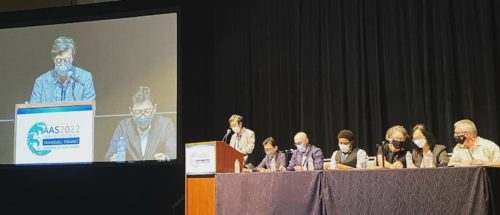Misleading headlines about China’s education sector miss the real story
Contrary to media reports, Sino-foreign higher education partnerships are doing just fine.

Earlier this month, the Chinese-Foreign Cooperation in Running Schools (CFCRS) division of China’s Ministry of Education (MoE) announced a routine update, released every few years, of all Sino-foreign higher education programs ever approved, going back more than two decades. Consistent with previous years’ practice, this update indicates programs that have been closed, but doesn’t provide an aggregate number, and doesn’t indicate when the closures happened.
Some foreign media, notably the South China Morning Post (SCMP), got this dramatically wrong, opting for clickbait at the expense of editorial judgement. “China kills almost 300 partnerships with elite foreign universities,” blared the SCMP, in a headline that gained a fair amount of attention in education communities worldwide. Their subtitle also suggested a (bogus) connection between the CFCRS update and China’s now-famous regulatory initiatives from last month, which placed dramatic restrictions on tutoring providers like New Oriental (NOS), TAL Education, and Gaotu Techedu.
In fact, the MoE hasn’t terminated these programs. Rather, the CFCRS updates merely recognize and report what individual joint venture partners for such programs have decided, for entirely quotidian reasons, usually lack of enrollment.
Mike Gow, faculty at a UK business school, grew up immersed in China’s education environment and wrote his PhD dissertation on Sino-foreign educational initiatives. Reacting to the SCMP headline, he wrote:
The overwhelming majority of closures listed are programmes that were set up pre-2003… Most – if not all – have either closed down due to never actively recruiting students, or have gone through an orderly closure process. There is no indication that the PRC’s MoE is targeting Sino-foreign [collaborative programs].
Interestingly, China’s local media demonstrated the more pervasive media misbehavior following the August CFCRS update. Local editors seemed to be pushing the “beware of foreigners” narrative, as evidenced by headlines found on Sina, Sohu, QQ, and a host of other local portals, which read along the lines of, “Attention! 286 Sino-foreign cooperative education institutions/projects have terminated, so parents and students should choose carefully!” While the Chinese media don’t suggest that the MoE “closed” hundreds of programs — which was a grammar-level error on the part of SCMP and others — these Chinese headlines do suggest that the 286 programs are all recent closures, and that all these closures therefore indicate a systemic problem with such programs.
Justin O’Jack, Chief Representative for the University of Virginia’s China office and a 20-year-plus resident in China, says, “I’m reminded of three years ago, when a similar announcement made headlines among higher education circles…Clearly the 286 programs in this week’s headlines include the cumulative 234 program closures announced by the MoE in 2018. Perhaps a less sensational, but more accurate, headline would be, ‘China lists 52 more Sino-foreign programs gone dormant since 2018.’ But that wouldn’t attract many clicks, would it!”
Indeed not. A relatively small number of programs ill-suited for the market have closed by their own volition over the decades, and have done so in an orderly manner. But the Chinese media headlines proved so troublesome that, in what seems a rather dramatic move, the MoE itself released a statement (in Chinese) on August 23, with a headline stating that such hyperbolic coverage as we’ve seen in the past week or two is, well, yesterday’s news. The MoE release states that, “Without verification, some media published the information announced by the Ministry of Education in 2018 and 2019 as ‘the latest information,’ which is misleading to the public.” During the following two days, China Daily and other local English-language media reported the MoE correction.
Some of the media reactions to the July regulations have been extreme as well, so much so that investment gurus like Ray Dalio and Ken Fisher have suggested that the broader Chinese equity price declines represent a buying opportunity. In a Caixin piece on August 18 titled “What the West Misses about China’s Offshore Tech Tumult,” Fisher refers to “hysterical Western pundits.” Nonetheless, tens of billions of dollars of market capitalization have been vaporized from the private education sector companies, so there’s plenty of justification for the substantive discussions about the far-reaching and substantial July regulations — in family dining rooms, in media, in boardrooms and think tanks, in China and worldwide — that we’ve seen since July 23.
But an enormous gulf exists between the July regulatory initiatives and the August CFCRS update. No empirical basis exists for any hand-wringing or clickbait headlines, about any supposed crisis in Sino-foreign education partnerships. The CFCRS update warrants little reportage at all, as the August 23 MoE upbraiding demonstrates. Considered as a category, these programs are doing remarkably well.
Since July 2018, the CFCRS updates include helpful click-through information about each program — any journalist worthy of the label can easily discover the truth about each program. O’Jack did a close analysis of the 2018 announcement and the most recent update, and concludes that “about 72% of Sino-foreign undergraduate programs established since 1994 are still recruiting students. That’s nothing to scoff at.”
Indeed not, again. That’s the real, important story that clickbait headlines not only miss, but mislead about. Quality collaborative educational ventures thrive here, and have done so for decades. Success models are many, and readily visible to those who care to look.
John Darwin Van Fleet chairs the Education Committee of the American Chamber of Commerce, Shanghai.






